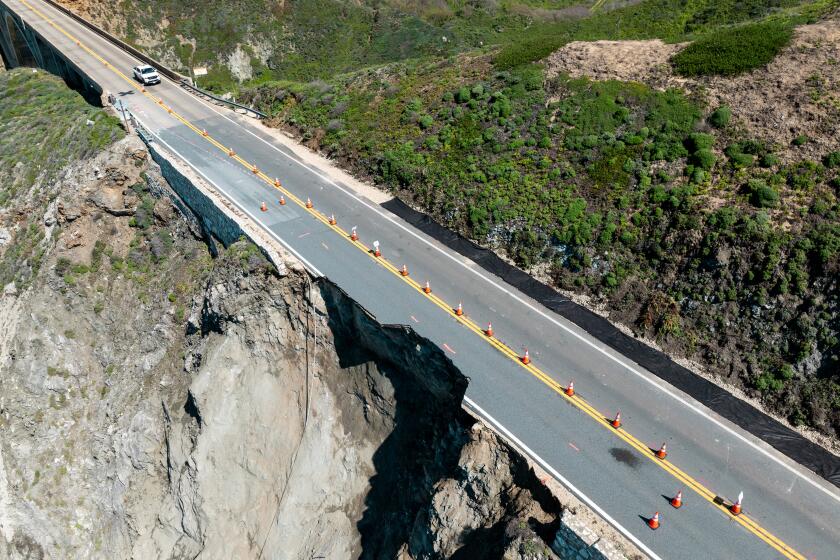Officials to Study Plans for Reservoir
Every time it rains, hundreds of thousands of gallons of fresh water wash down the Los Angeles River and out to sea. Officials want to see if they can catch that water and use it before it mixes with saltwater in the harbor.
The Los Angeles County Department of Public Works and the Water Replenishment District of Southern California are sharing the costs of a $600,000 study to determine if a freshwater reservoir at the mouth of the Los Angeles River could capture storm runoff.
Depending on the quality of the water they capture, it could be used for irrigation, industry or replenishing ground-water reservoirs.
“The water situation in California is not looking good these days,” said John Hohman, Department of Public Works’ supervising engineer and project manager of the reservoir study. “Even though we can meet the demand now, we don’t want to wait until the last minute to come up with another program.”
Earlier this week, Montgomery Watson, a Pasadena-based environmental engineering company, began the first of two phases of a feasibility study on the project. If the first phase, which should take about nine weeks, shows that the reservoir is not feasible, the project would be terminated.
If the results are promising, however, officials will study potential uses for the water, the effect of the project on the environment and the economic benefits.
The reservoir plan, which was first conceived in 1980, would require damming an area at the river’s mouth. The idea is based on two similar reservoirs in Hong Kong, and the biggest challenge, Hohman said, would be to keep saltwater out of the dam.
Although the project has barely gotten under way, it has drawn criticism from some environmentalists. Dorothy Green, founder of Heal the Bay, said the study is a waste of money.
Green said the water could be caught and stored upstream in areas such as the San Gabriel Valley’s gravel pits.
The stored water could be slowly released into the river after the river’s water level had dropped, so it would serve to control flooding, Green said.
But water officials said that is not economically feasible. No areas higher in the watershed are large enough to collect the amount of water that they hope to capture each year, Hohman said.
Water officials want the reservoir to hold at least the runoff from an average storm, but it would be more beneficial if it could hold twice that capacity, they said.
Capturing storm-water runoff could provide about 150,000 acre-feet of water per year.
More to Read
Start your day right
Sign up for Essential California for news, features and recommendations from the L.A. Times and beyond in your inbox six days a week.
You may occasionally receive promotional content from the Los Angeles Times.






